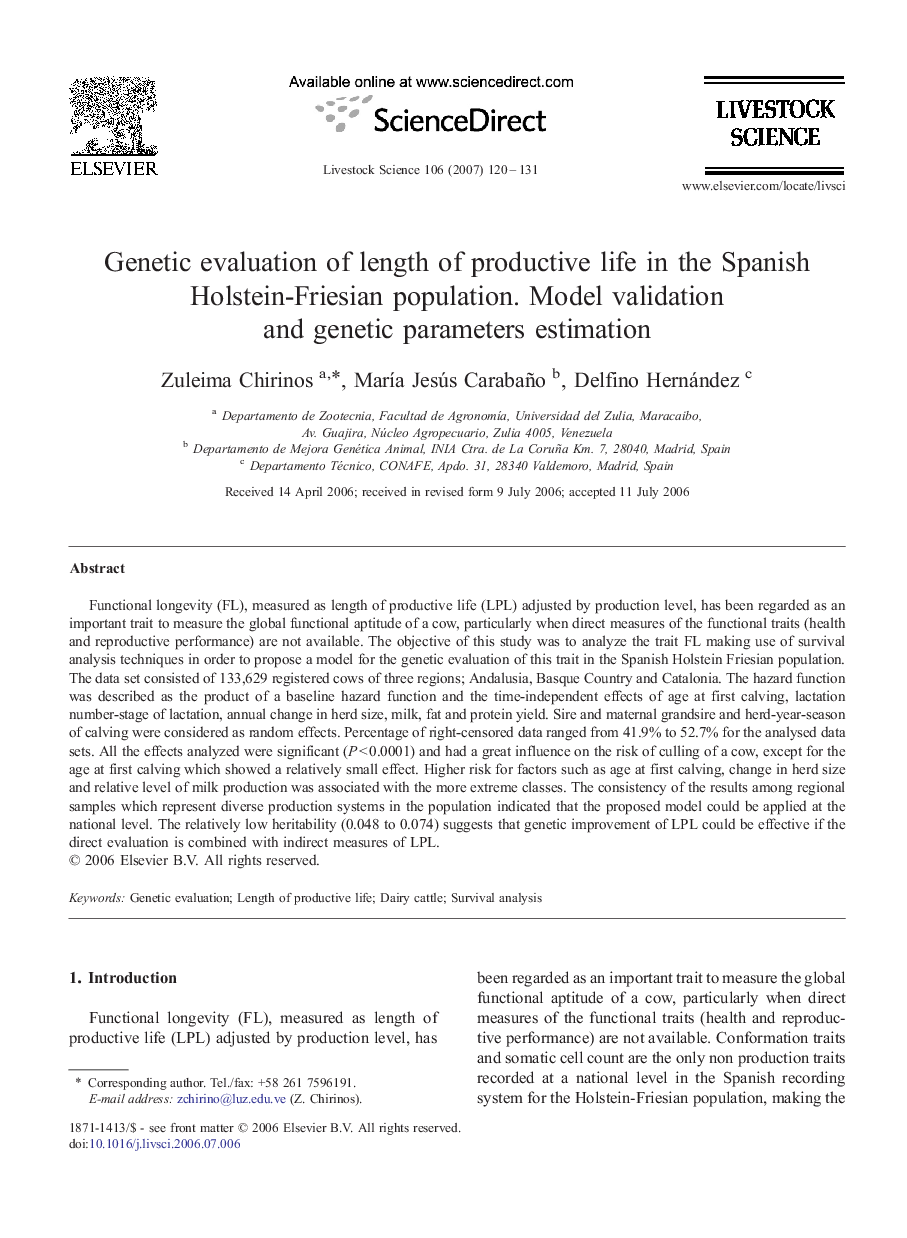| Article ID | Journal | Published Year | Pages | File Type |
|---|---|---|---|---|
| 2448987 | Livestock Science | 2007 | 12 Pages |
Functional longevity (FL), measured as length of productive life (LPL) adjusted by production level, has been regarded as an important trait to measure the global functional aptitude of a cow, particularly when direct measures of the functional traits (health and reproductive performance) are not available. The objective of this study was to analyze the trait FL making use of survival analysis techniques in order to propose a model for the genetic evaluation of this trait in the Spanish Holstein Friesian population. The data set consisted of 133,629 registered cows of three regions; Andalusia, Basque Country and Catalonia. The hazard function was described as the product of a baseline hazard function and the time-independent effects of age at first calving, lactation number-stage of lactation, annual change in herd size, milk, fat and protein yield. Sire and maternal grandsire and herd-year-season of calving were considered as random effects. Percentage of right-censored data ranged from 41.9% to 52.7% for the analysed data sets. All the effects analyzed were significant (P < 0.0001) and had a great influence on the risk of culling of a cow, except for the age at first calving which showed a relatively small effect. Higher risk for factors such as age at first calving, change in herd size and relative level of milk production was associated with the more extreme classes. The consistency of the results among regional samples which represent diverse production systems in the population indicated that the proposed model could be applied at the national level. The relatively low heritability (0.048 to 0.074) suggests that genetic improvement of LPL could be effective if the direct evaluation is combined with indirect measures of LPL.
